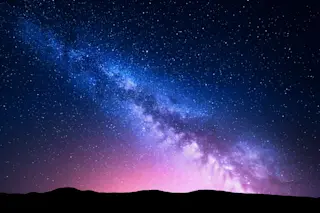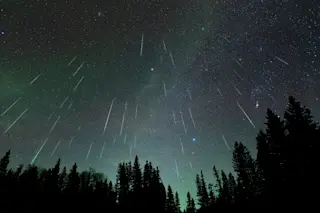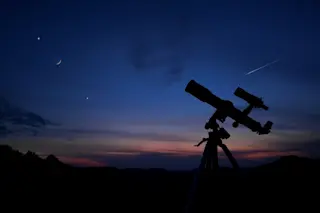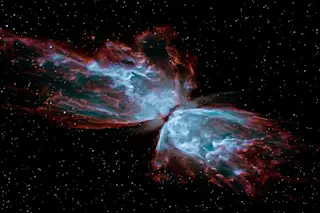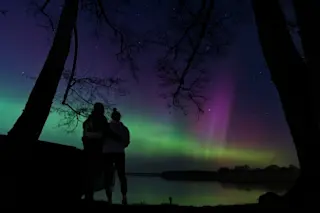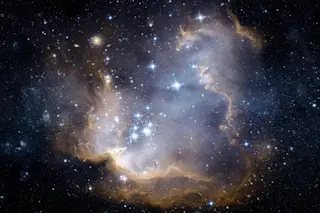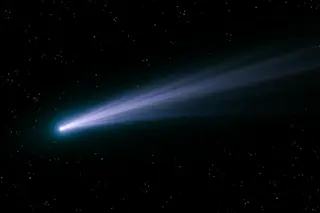I had just moved farther into the mountains in upstate New York, a solid 30 miles from the nearest large town or mall. Suddenly, the winter stars emerged with breathtaking clarity, as if someone turned up the contrast knob. I discovered, as we all do when vacationing or visiting friends in rural areas, that one price of twentieth-century technology is the diminishment of the night sky's beauty. It's hard to be enraptured by a few feeble stars poking through a synthetic, milky glow.
The culprit in changing the night from black to light gray (or, in major urban areas, to yellow orange or blue white depending on whether the streetlamps are sodium or mercury vapor) is artificial light, amazing amounts of which can be thrown into the heavens. One easy antidote is to aim the light downward rather than up toward the sky--mounting bulbs above billboards, for example, instead of positioning them at the bottom. Simple economics has already forced developers to install parking lot lights that point downward. And recessed fixtures with reflectors behind the bulbs provide more ground illumination with less wattage than the yard lights seen in many rural driveways. All this saves money. And, more important to sky lovers, it preserves our view of the night sky.
But in these winter months, aiming the light down doesn't help too much. The reason: Snow. The white stuff is four to five times more reflective than what lies beneath, bouncing that much more light upward. February's often excessive cloudiness only adds to the effect. Scattered clouds over a city at night are positively luminous, especially when there's snow. So forget the stars--it's like hearing Mozart on a kazoo.
But this February sky watchers can take heart. The month offers the most brilliant stars and planets in years, with constellations bright enough to be seen above the glowing sprawl of Los Angeles (shown at left), or even from Times Square. At such intensely illuminated locations, the faintest naked-eye stars are about second magnitude. Only 70 stars are that bright--but at any given time, half of these are dipped below the horizon, while others are subdued into oblivion, buried in the thick air near the horizon. The remainder, about 25 stars that can be seen from the large cities and brightly lit suburbs where most of us live, is a paltry 1 percent of what the heavens display from rural sites. Fortunately, a large number of that pathetically small battalion of naked-eye suns shine brilliantly this month. In fact, the sky boasts the brightest assembly of stars and planets of the decade. Right now, 13 first magnitude stars are visible as twilight deepens, and 7 (including Jupiter, Saturn, Venus, Mercury, and later-rising Mars) are an intense magnitude zero or better. Although it is rather rare for all 5 bright planets to be out and brilliant, especially at this time of year, that is exactly what's happening. And then, for a climax, there is the spectacular, dazzling, Venus-Jupiter conjunction in evening twilight on February 23.
The winter constellations--centered on Orion's luminous supergiants, red Betelgeuse and blue white Rigel, with the Dog Star, Sirius, just below--are the year's most striking grouping. In fact, our planet now faces into the galaxy's Orion arm, an active, nebulous, star-making region in the galactic plane facing away from the center.
Backyard telescopes currently perform their best urban magic when pointed toward the bright, giant planets Jupiter and Saturn. But the unaided eye finally has a February when it can feast as well--even from Broadway.








